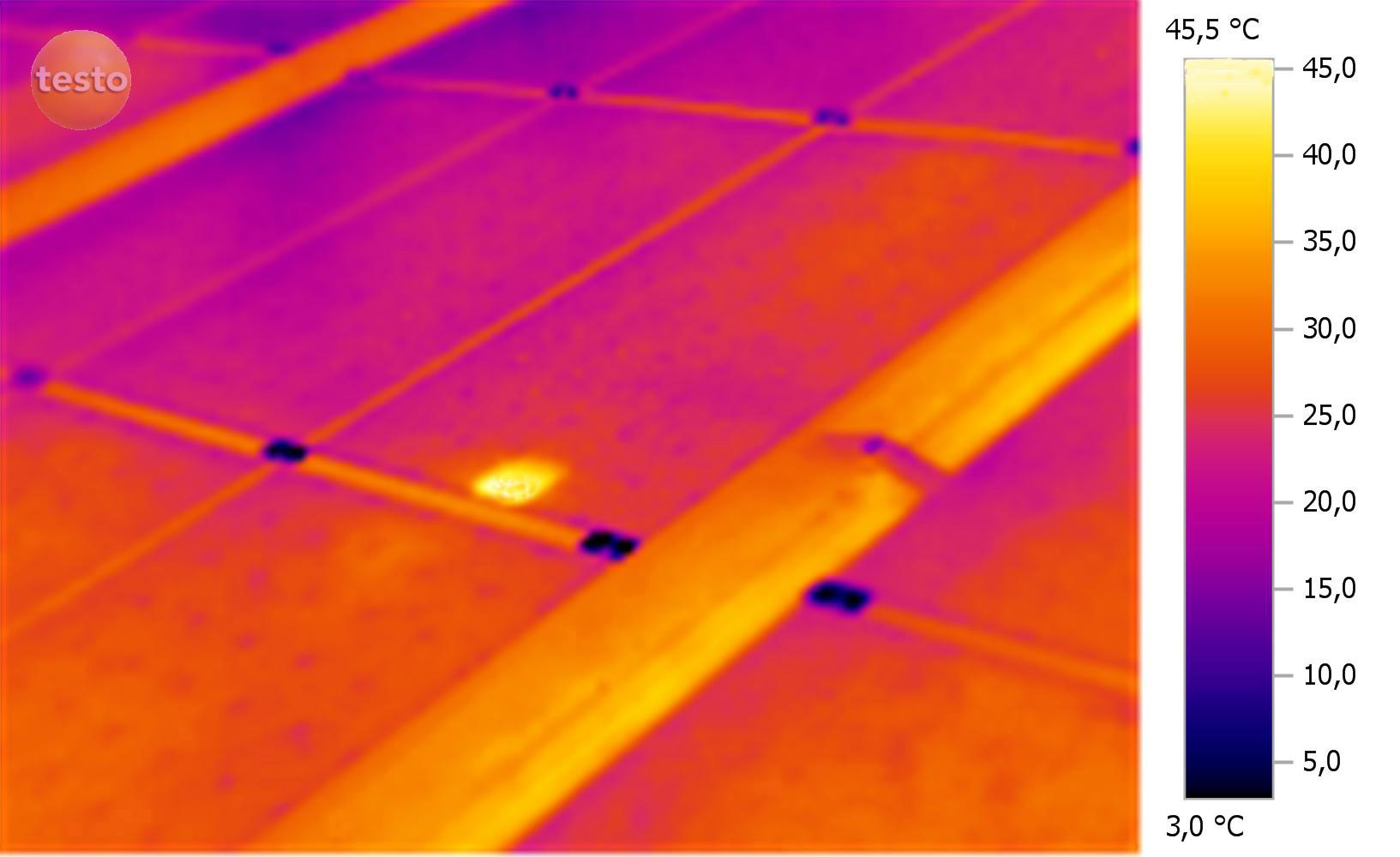Using thermal imagers to locate ‘hot spots’ on solar installations

As a tradie, you’ve probably come across your fair share of thermal imagers over time. But did you know that they can also be used as a tool to detect defective cells or other problems in solar panel installations?
Thermal imaging operates by detecting infrared radiation emission; in simple terms thermographs (the image the thermal imager produces) allow you to see warm objects stand out against cooler backgrounds.
ADVERTISEMENT
In the case of solar panels, a thermograph would highlight defective cells using a warmer colour on a cooler background. Defective cells can be 10° to 15° higher in temperature than the rest of the panel.
Thermal imagers used for highlighting defective cells have specific programs that can include the solar radiation value. These programs pre-set the imager’s soft-keys and ‘hotspot’ routine. As a result, cells and other defects are shown on the imager and may be included in reports.
One manufacturer that supplies this type of thermal imager is testo. The company has introduced the solar panel inspection program as a standard function on all their imagers.
testo product manager Chris Rose says handheld and lightweight cameras allow for flexible use in the field.
“Installers don’t have to get behind the panel or even touch it, as they would to make an electrical measurement. It’s just like using any digital camera,” he says.
However, according to testo, the rate of new solar systems containing defects can be as high as 80%. Chris suggests that panels be checked straight after installation so that faulty products can be returned to manufacturers or repaired under warranty. This is not only for the benefit of the consumer, but the installer too, as initial and thorough checks for faulty panels ensure future maintenance is much easier.
“If the first check is done immediately after the installation, it provides baseline data. So when future checks are carried out before the warranty runs out, the manufacturer or installer just has to look for the differences,” he says.
Regular annual checks can also be important: “Your typical domestic solar array is only 2kW to 4kW. It doesn’t take much internal damage or dirt on the surface to cut the amount of energy that is produced.”
What you need to know
Although using thermal imagers is as simple as taking photos, there are still factors that installers need to be mindful of in order to perform efficient inspections.
Due to specular reflection from the glass, surrounding objects can be seen in the thermal imager. This may result in false ‘hotspots’.
“In the specific case of solar assessments, there must be enough sunlight falling on the panel to make it operate properly, and the relative angles of the sun, panel and imager must be within defined limits. So if the sun is shining directly on the panel (at 90°) a viewing angle of around 60° gives an optimal result,” Chris says.
It is also recommended to check the weather before an inspection. Windy days will cause localised cooling and thus change the thermal effects, while cloudy days will interfere with the solar radiation.
Hot days will also undermine the efficiency of imagers as a contrast of temperature is harder to gather. To counter weather pattern impediments, solar inspections should ideally be carried out on dry, cloud-free days with intense sunshine, but when outside temperatures are still low.
A damaged lens is another major impediment to the accuracy of a measurement. Some thermal imager models may be fitted with a lens-protection filter to ensure that the front element of the lens does not get scratched. However, if scratches do occur, the temperature-measurement accuracy will suffer.
Due to the nature of the faults, and problems associated with working on PV arrays, it is suggested that a good thermal imager is used to detect problems before they happen, or as they arise. Solar panels are energy efficient but can make life tricky – and installers should do all they can to reduce the impact on time and the bottom line when a faulty panel is detected.
-
ADVERTISEMENT
-
ADVERTISEMENT

